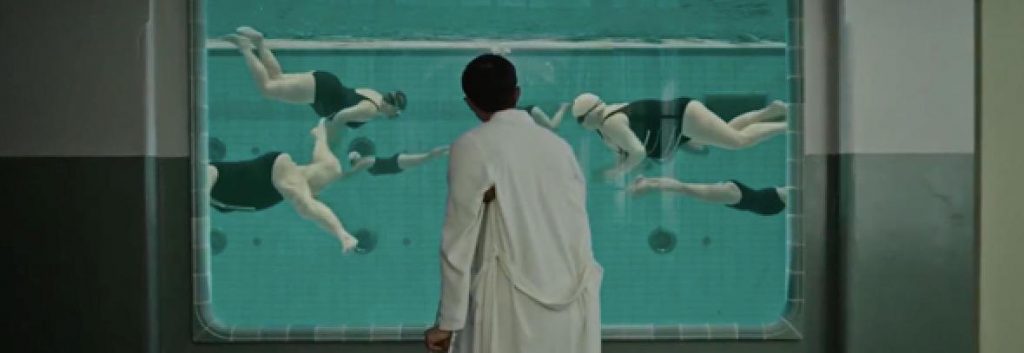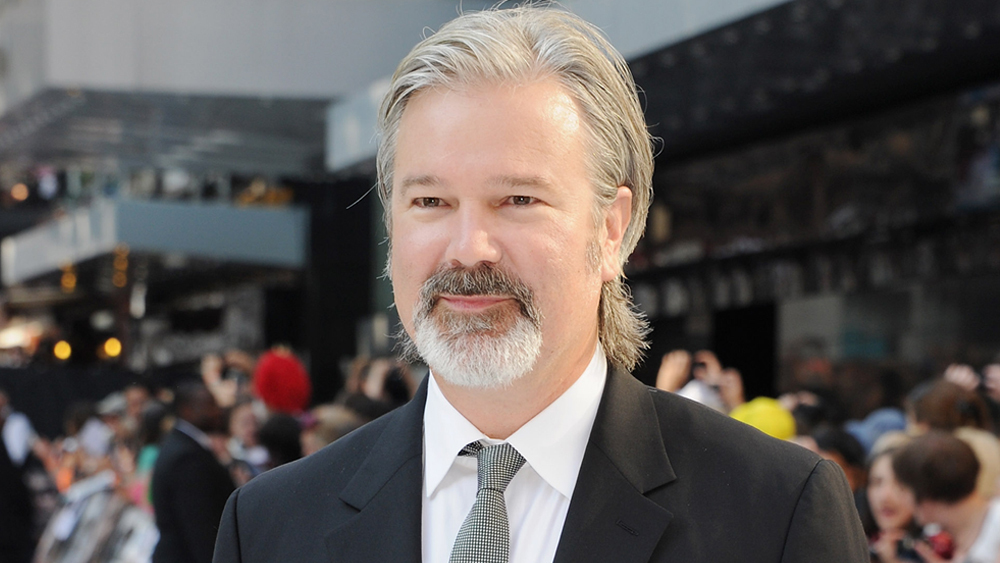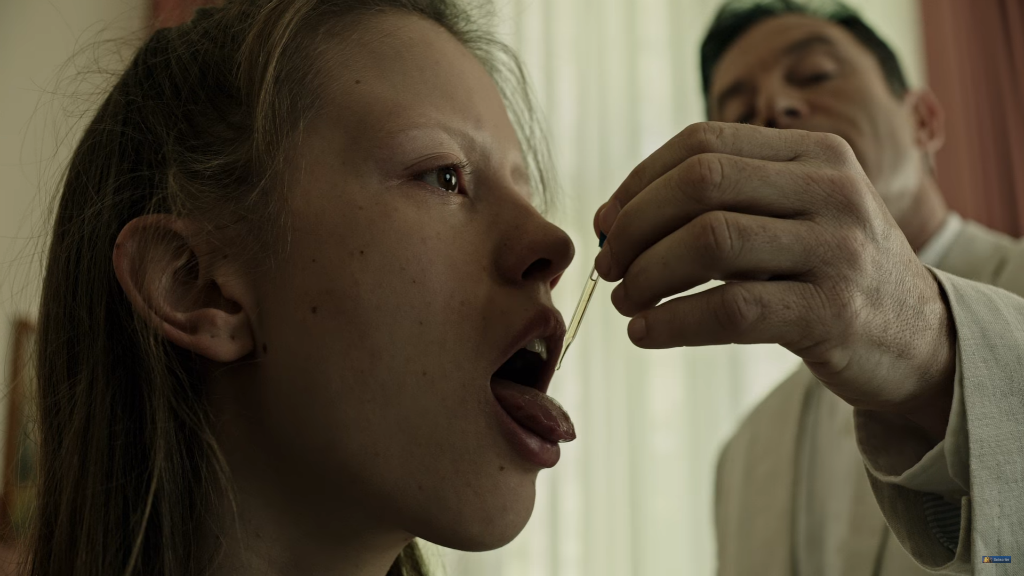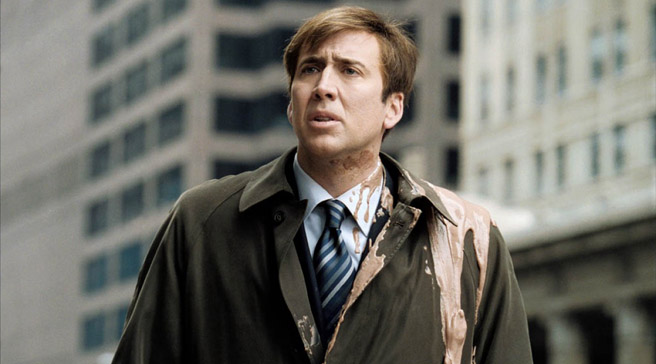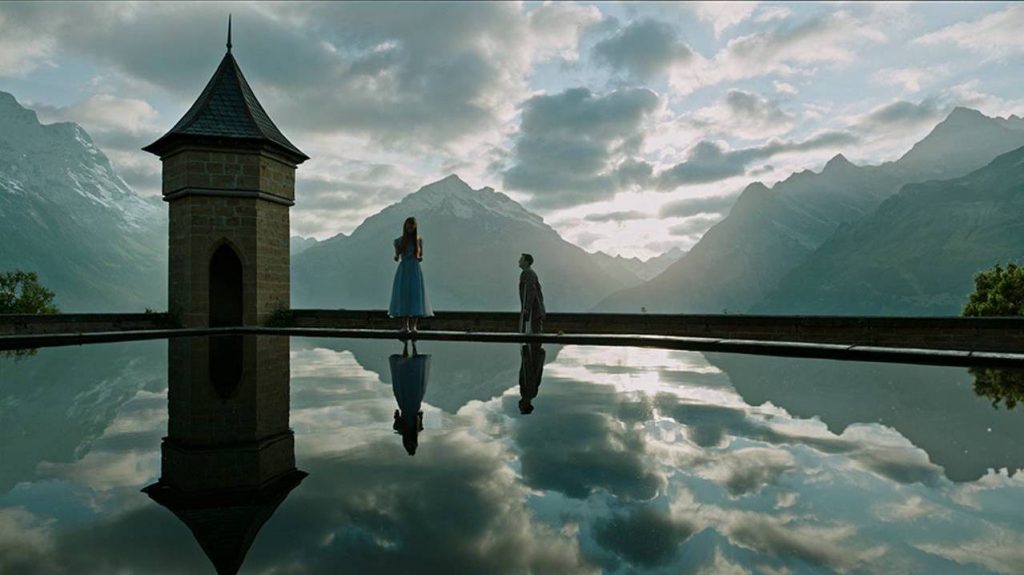Alex writes about Gore Verbinksi’s A Cure for Wellness.
The first half of this title is simultaneously one of my favourite questions to ask about a given movie as well as the name of one of my favourite podcasts. Since December 10th, 2010*, Paul Scheer, June Diane Raphael and Jason Mantzoukas have co-hosted a show built around discussing terrible films, with the core idea of the title being that each of these films is so bad that they probably shouldn’t have made it past the brainstorming stage. And yet, despite not being the most scholastic podcast in the world, HDTGM is frequently interesting for non-comedic reasons that reflect the cinematic climate of the when their subject was released.
*Coincidentally the same day James and I posted our first episode of the MacGuffin Men. Both podcasts have grown to be equally successful.
Now, I do not have the same goals here. I am not here to roast Dan DeHaan nor creepy water nor bicycles. I liked A Cure for Wellness; I liked it plenty. I wish five movies of its eel-filled ilk were released each year. And yet in a cinematic world of continued McDonaldization-based despair, this one-off horror film with a mid-level budget was produced and released in the dead zone before Logan began 2017’s superhero parade. This was not a micro-budget independent movie that the producers could comfortably assume would make its money back in a Netflix rights sale; this was an honest to god gamble on a movie. So, after watching this movie that I enjoyed, I found myself continually asking one question: how did this get made?
This will be a series of (at least two) essays about movies that somehow got made within a cinematic world increasingly driven by capitalism, despite said movies seeming like surefire commercial gambles. In a world of safe sameness, I want to talk about some bizarre entries that were allowed to exist by the kingdom’s gatekeepers.
The road to A Cure for Wellness starts relatively simply: Gore Verbinski is a talented director. He has made numerous truly well directed films, from The Weather Man to (assuming I’m recalling it correctly) MouseHunt. The Ring is an enjoyable horror film that made a close friend of mine terrified of closets for at least six months in 2002. The first Pirates of the Caribbean film is mostly wonderful, and the third entry in the series is less so, but better than people thought. (The second ranks among the least enjoyable cinematic experiences I have ever had.) Rango won the Academy Award for Best Animated Feature, and is genuinely fun. The Lone Ranger was a mess – another entry into Hollywood’s abstract “Armie Hammer can be a superstar, right?” series – but, oh, how those train sequences sung. Verbinski’s visual aplomb was basically the only part of that movie that wasn’t terrible. And now here we are, in 2017, locked in a German castle trying to avoid having our brains fried.
Verbinski is not accepted as an auteur and – despite his considerable talent – that feels proper. His career occupies a sort of in-between space in Hollywood; he’s no auteur, but he’s too talented to be just another hack whose name gets passed from project to project by a studio. (He’s not Gavin O’Connor, say.) That said, Verbinski still lacks a certain name recognition: A Cure for Wellness can’t be marketed off his name in the way Dunkirk could be marketed off Christopher Nolan’s, try as a trailer might. In A Cure for Wellness’ spots, we are given the line “From visionary director Gore Verbinski,” a name few (normal) people know, and a directorial vision even fewer could imagine.
Simply put, Verbinski has not made a film that is well-remembered by the masses since the first Pirates film in 2003*. If people know Verbinski’s name for anything, they know him as the director of the first three Pirates films (and perhaps The Ring). Verbinski is a good director who is overqualified for many of the jobs he has taken, which lead to their surprising quality, but who has – likely because of the commercial leanings of his work – remained under-qualified for a leap into the auteurist ranks. It feels odd that Verbinski still had metaphorical chips of box office success to cash in after The Lone Ranger, and yet it seems he did.
*The people that remember Rango probably don’t remember the name of its director.
A Cure for Wellness is a relatively simple horror story; it’s basically The Shining sans Scatman Crothers. Dane DeHaan goes into the belly of an apparent beast to get a higher up from his company back to New York, and in doing so DeHaan finds himself in a watery potential grave. There is misconception, a certain sort of vitamin water, a creepy young woman, and a potentially creepier Jason Isaacs. Admittedly, not a ton happens here, and the film is a relatively standard, slow-burning horror show with few jump scares. In a couple of different interviews, Verbinski has cited films like Rosemary’s Baby as reference points, and the film feels like a successful (if not qualitatively identical) attempt to create that atmosphere. A Cure for Wellness feels decidedly old-fashioned, the type of vision we moviegoers continually feel like does not get made anymore.
But this vision was held, this vision was financed, and that financed vision is A Cure for Wellness. There is nothing essential about it – had it been released in 1998 it would have seemed like merely any other horror film – but it is splendidly directed, appropriately creepy and (in at least one scene) borderline horrifying. Verbinski’s best work has always been marked by directorial patience and in a world of cinematic sprinting, and seeing the same approach he applied to The Ring in 2002 fifteen years later feels even more refreshing today.
So, how did this movie get made? It seems like a variety of moneymen and women pooled together from both America and Germany, with New Regency taking the producerial lead. The company – formerly Regency pictures – has become a strong voice for filmmakers looking to tell their story in their way; recent New Regency successes include The Revenant, Gone Girl, Birdman, 12 Years a Slave, and The Big Short. Transitioning from mostly standard entertainment, squeakuels and shitty action movies, this decade has seen New Regency primarily focus on helping filmmakers make their passion projects, and it seems like Verbinski falls into this category. (It is unclear how much of the money was provided by German producers, but these things are usually foggy, especially for a film nobody fucking saw.)
Alright, well, what was that vision? Where does the passion lie in A Cure for Wellness? I still have no idea.
It’s surprisingly difficult to find much about Verbinski online. There are not a lot of profiles about him, perhaps as a result of a concerted effort by Verbinski, or perhaps because the filmmaking media does not find his work worthy. Listening to the interviews that can be found, though, it sounds like Verbinski mostly wanted to create a modern horror film that mirrored what he enjoyed about a more patient version of the genre from the 1970s. That makes sense, but I’m more confused by how Verbinski convinced others not to make him cut it down into 100 minutes. New Regency really did believe in him, I suppose.
The budget for this film has been reported at $40 million (although Verbinski’s skill makes it look like double that), which is exactly the level of film Steven Soderbergh famously declared does not get made anymore. A Cure for Wellness is a patient horror movie made for adults in a frequently youth-oriented genre, and it almost feels disorienting watching it in 2017. Somehow, Verbinski convinced people to have faith in his ideas, faith that his ideas would work out for everybody financially in the long run.
When you make enough movies that make enough money, financiers will start to believe you have the capacity to predict the way the market will accept your next venture. As much as I hate talking about the financial aspect of filmmaking – although I’m realizing that seems to be the only thing I’m doing in this piece – I am realistic enough to understand that in this case it is important. Giving Gore Verbinski a cinematic credit check, it’s pretty easy to see why people would believe he could turn their money into a movie with which to make even more money. Outside of his last film The Lone Ranger – a notoriously messy production that could easily be explained as something Verbinski never really had control over – the last film of his to fail at the box office was The Weather Man in 2005. In short: people may not know who the fuck Gore Verbinski is, but they flock to his films nonetheless.
The question remains: why did Verbinski want to make this film? What was it about A Cure for Wellness that made him cash in his chips to make it? Typically when a filmmaker is using so much of their accrued wealth to make a project, it means something to them. I can easily imagine Verbinski seeing The Lone Ranger script and his paycheque side by side and saying “This is worth it,” but when the script gets larger and the cheque smaller as it does on a project like A Cure for Wellness, you have to find something in the former to keep you moving.
So, I set out to solve this problem. I watched every Gore Verbinski movie and treated him as an auteur as best as I could; I looked for recurring themes, visual motifs, and what made his films work (or not work). Given that Verbinski is typically interested in specifically crowd-pleasing films, it’s a bit more difficult to gauge; when somebody is making a film for others instead of themselves, they’re more willing to cut the more personal aspects for the sake of the crowd. I tackled the last of Verbinski’s films that could be construed as more personal, the “thanks for making The Ring*!” faux-indie comedy that is The Weather Man.
*The Weather Man was made between Pirates 1 and 2, but it was financed by Dreamworks, who produced The Ring.
I really liked The Weather Man when it was released in 2005, when I was still susceptible to the post-American Beauty boom of disguising a film in a thin layer of awkward, sadness-based comedy to make us think its makers were creative. It turns out that this is not a very good picture at all. (In fairness to my original review, I was a teenager at the time.) It has its moments – Nicolas Cage is good, as is Michael Caine, the score is an intriguing departure for Hans Zimmer, and Verbinski has never made a less-than-gorgeous film – but it is incredibly flawed. That said, clues to the real Verbinski remain.
To put yourself into the head of a director choosing to follow their biggest success with The Weather Man, you have to imagine what it’s like to be thrown into a level of the world you had previously been barred from. Verbinski had been moving on up with The Ring’s success, but Pirates elevated him into the type of filmmaker that made a film that became a true cultural sensation. Pirates was the biggest film Verbinski had made at the time, and he knew he had a couple of sequels to make sooner than later. So, what to do in the meantime? Clear your head with a smaller film about normal human beings (even if one of those normal human beings is played by somebody even kookier than your Pirates star). Let the real Verbinski shine through before you go back to the world of covering Geoffrey Rush up with layer and layer of CGI.
As with most of Verbinski’s work, water is prominent in the visuals of The Weather Man. The film begins with a prolonged shot of a frozen Lake Michigan, and throughout the film Cage spends a good amount of time standing next to a water cooler. In his horror films, water is even more prominent: some of The Ring’s best shots involve fragile, glass-like water, and A Cure for Wellness almost seems to be built around the fact that nobody shoots water better than Verbinski.
Thematically, the main idea in The Weather Man is one of self-improvement. Cage sees the way he needs to improve his life, and he spends the film’s runtime attempting to achieve said improvement. He is a successful person looking to achieve a broader type of success; a core thought running through the film is that a regional weatherman is a clown, while a national weatherman is a respected individual. (Again, this film is not fantastic.) The ending of the film, while making it clear that not all of his problems have truly gone away, has at least found Cage feeling better about himself. He has the new national job he wanted, the new national payday he wanted, and he feels as though his family doesn’t hate him anymore.
Even though I had seen the film once over a decade ago, watching it again today I assumed Cage would not get the job he wants. I felt as though he would stay in Chicago with his family and the job where he feels like a goof; I assumed a mild familial success would trump financial and status-based successes. I was wrong.
In an unrelated move, Gore Verbinski followed the modestly budgeted The Weather Man with four movies that totaled $885 million in production costs*. Then he made A Cure for Wellness.
*Including one that was (at the time) the most expensive film ever made.
If there is anything interesting running through A Cure for Wellness outside of its considerable style, it is a rejection of a traditionally corporate, capitalistic lifestyle. At the beginning of the film, DeHaan is willing to do anything to move up in his job, even though he already seems to be doing so naturally. When his bosses request he go fetch a runaway CEO so that said CEO can be the scapegoat for some insider trading, DeHaan views it as an exciting opportunity instead of a sad instance of corporate chicanery. As DeHaan gets sucked into the spa’s machinations and his CEO’s reasoning for fleeing his previous lifestyle, DeHaan starts to have his own doubts about where his life is headed, even aside from the thought that he might not get it out of this spa of horrors alive.
Perhaps it’s as simple as that. Perhaps Verbinski grew tired of making expensive blockbuster fare, as this is his lowest budget film in over a decade (by almost $100 million). It seems entirely possible that he got tired of the world he was in, and wanted to go off to a sanctuary to make a smaller film and clear his mind. At its core, A Cure for Wellness is a movie about somebody being slowly destroyed by capitalism and finally choosing to reject it.
(Am I projecting onto Verbinski? Of course. Am I going to continue said projection? Of course.)
At the end of A Cure for Wellness, DeHaan literally crashes into his former employers with his bike as they drive up to the spa to rescue him. (It’s truly hilarious that seemingly all of his bosses came as opposed to one or two, but so it goes.) DeHaan is ordered into their car, an order he swiftly ignores so that he can continue riding down this hill with Mia Goth.
As the movie ends, as we see our hero coast away from a horror show that lead him to another horror show, DeHaan smiles. I remain legitimately undecided on whether I am to believe DeHaan is happy, or if he was merely infected with another sort of corruption in the sanctuary. With Verbinski, such things are never as clear as the water he seems to be obsessed with shooting. Perhaps the next movie will be the key to this cipher. With Verbinski, that always seems to be the case.

